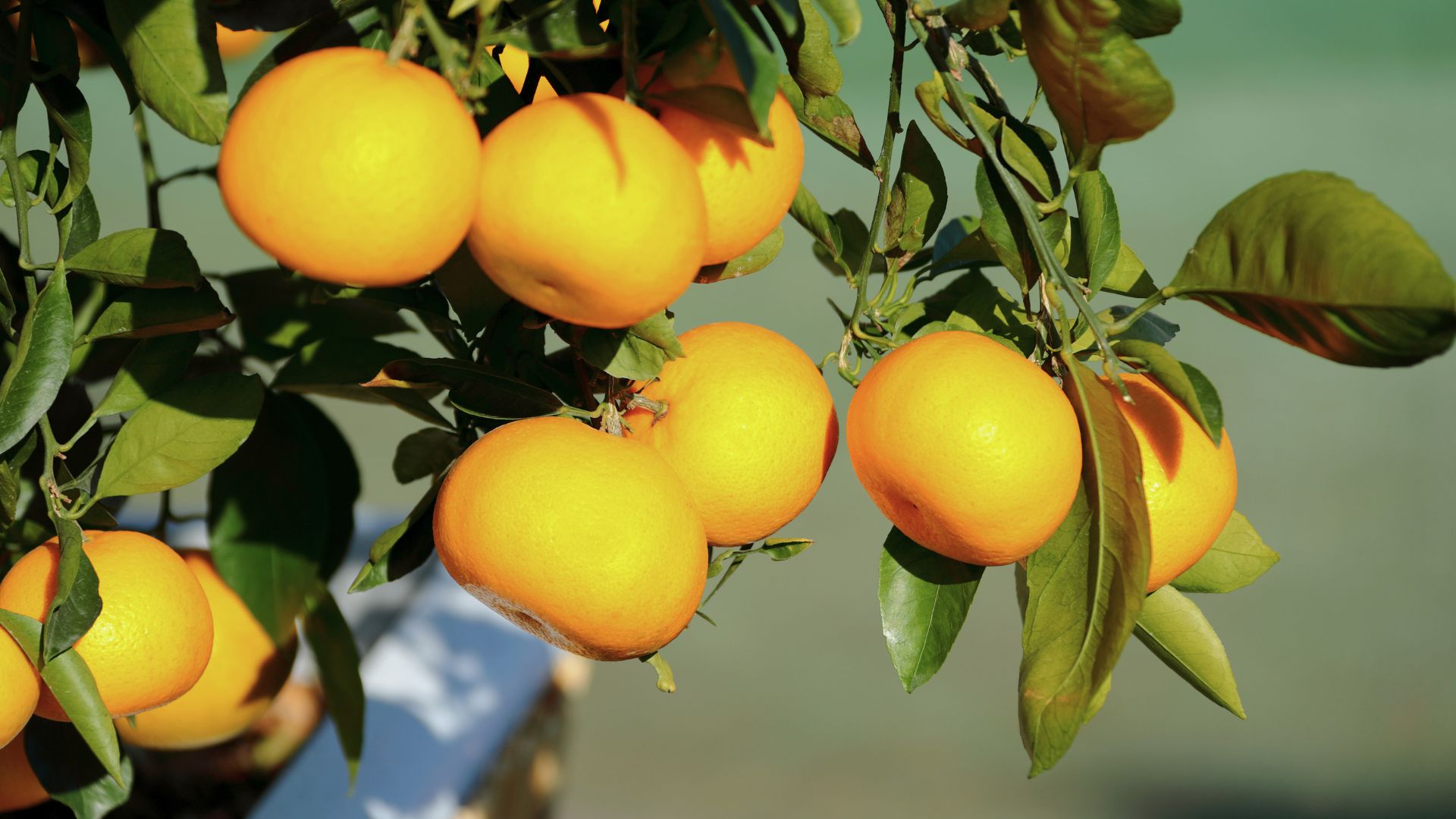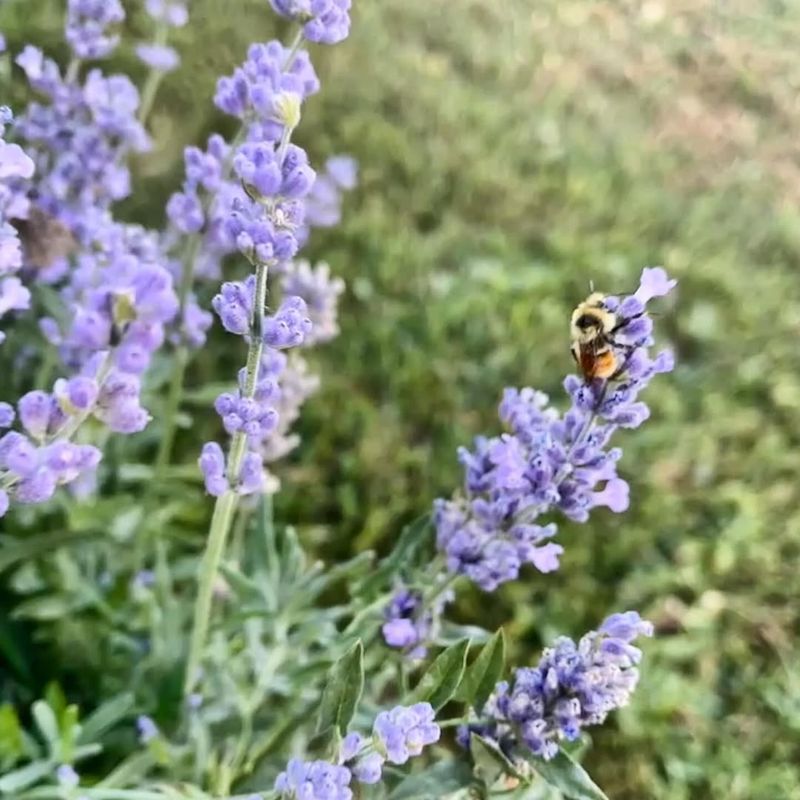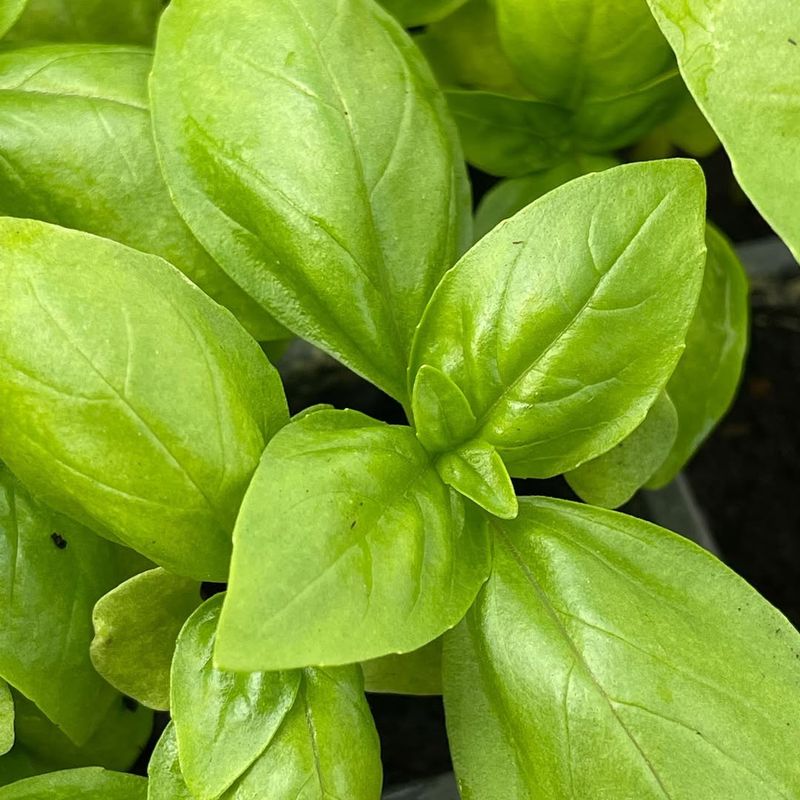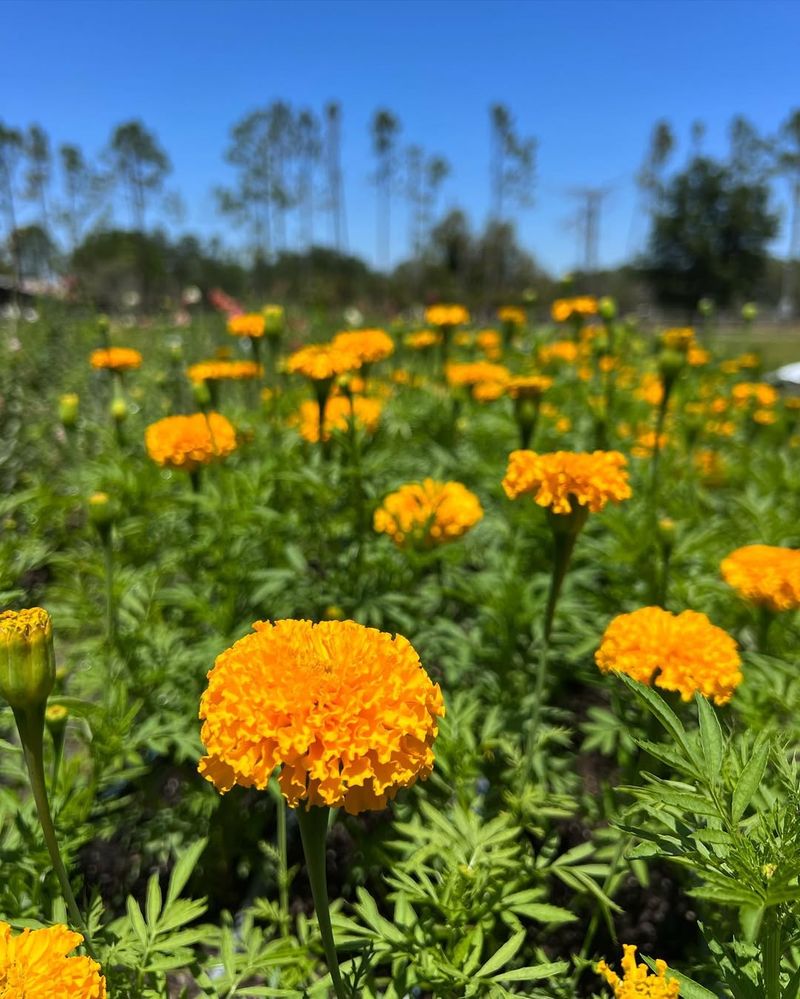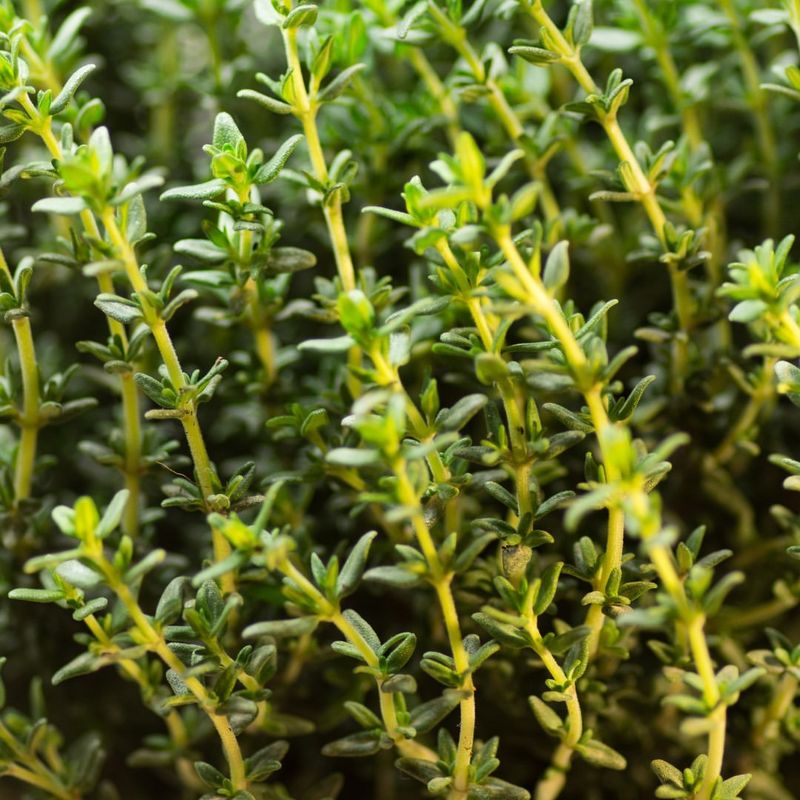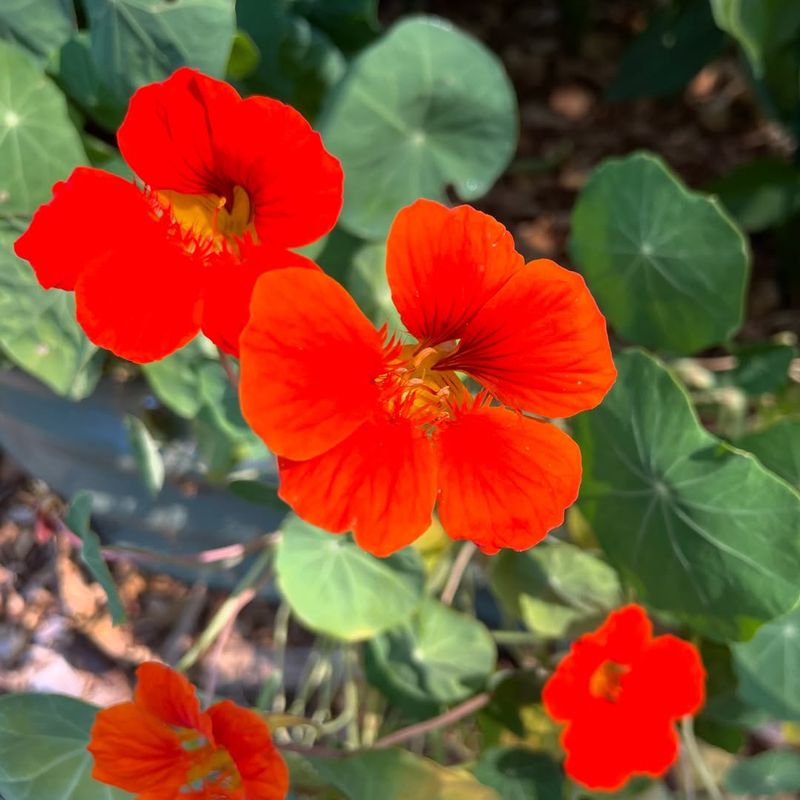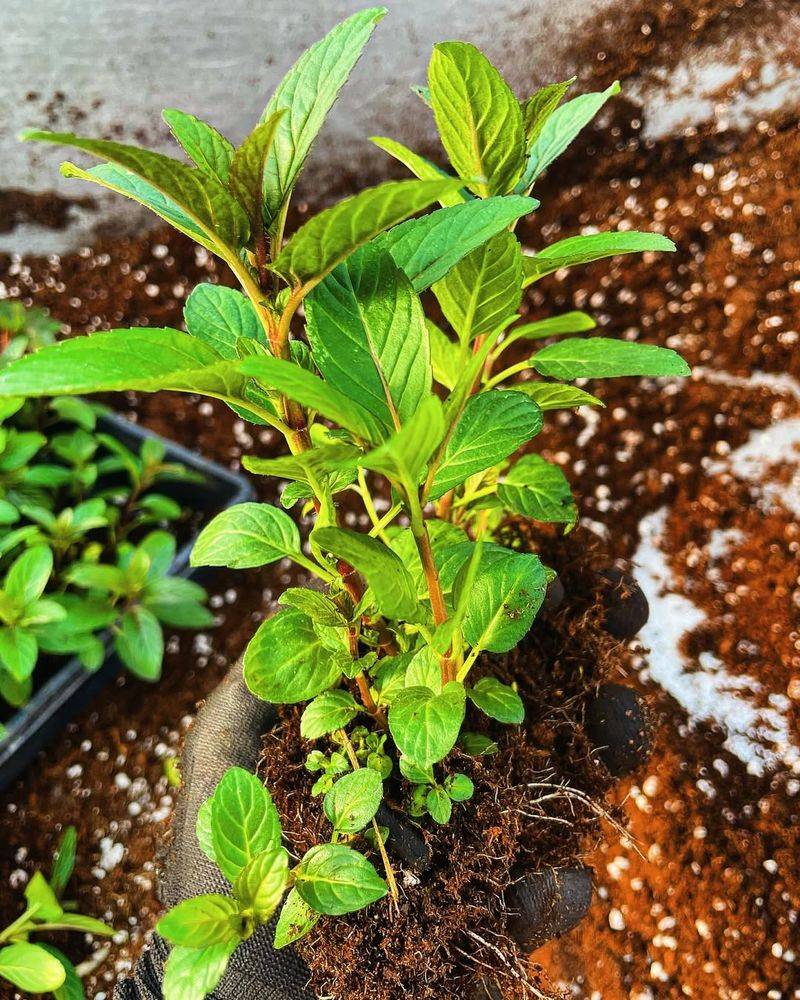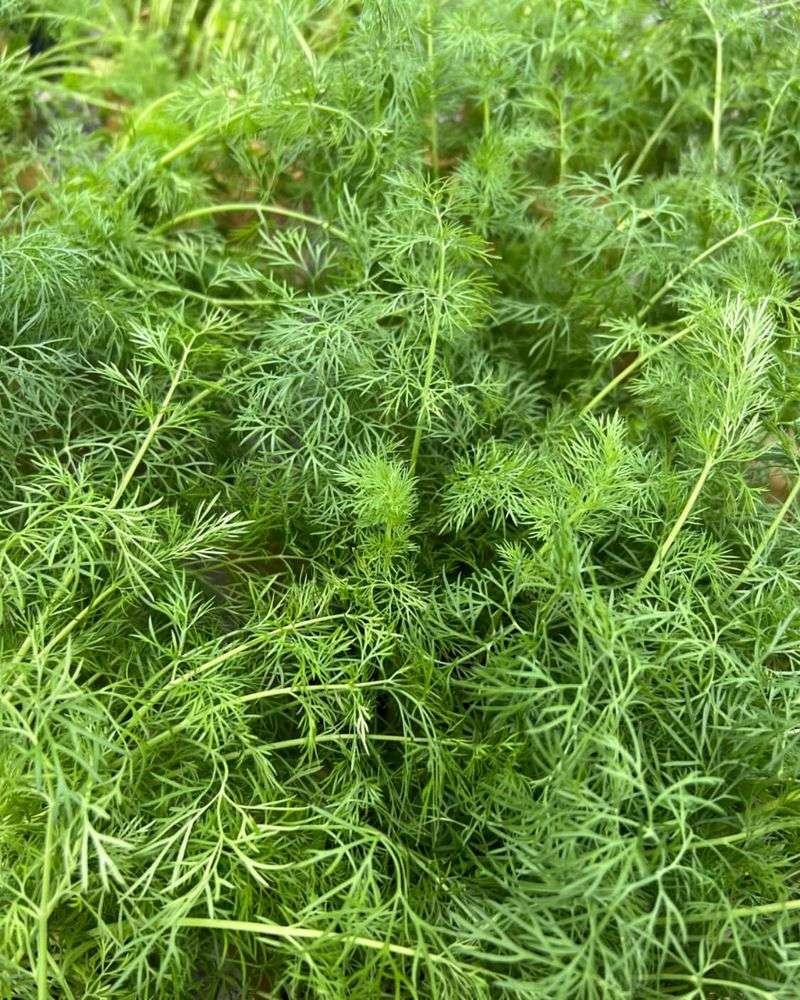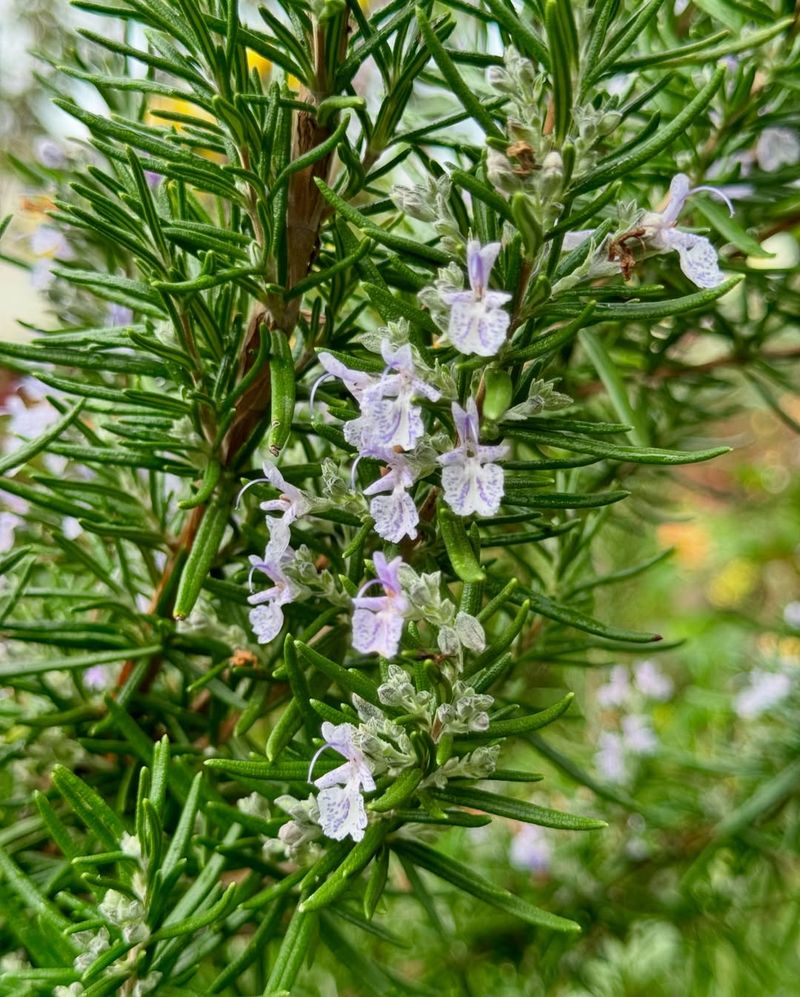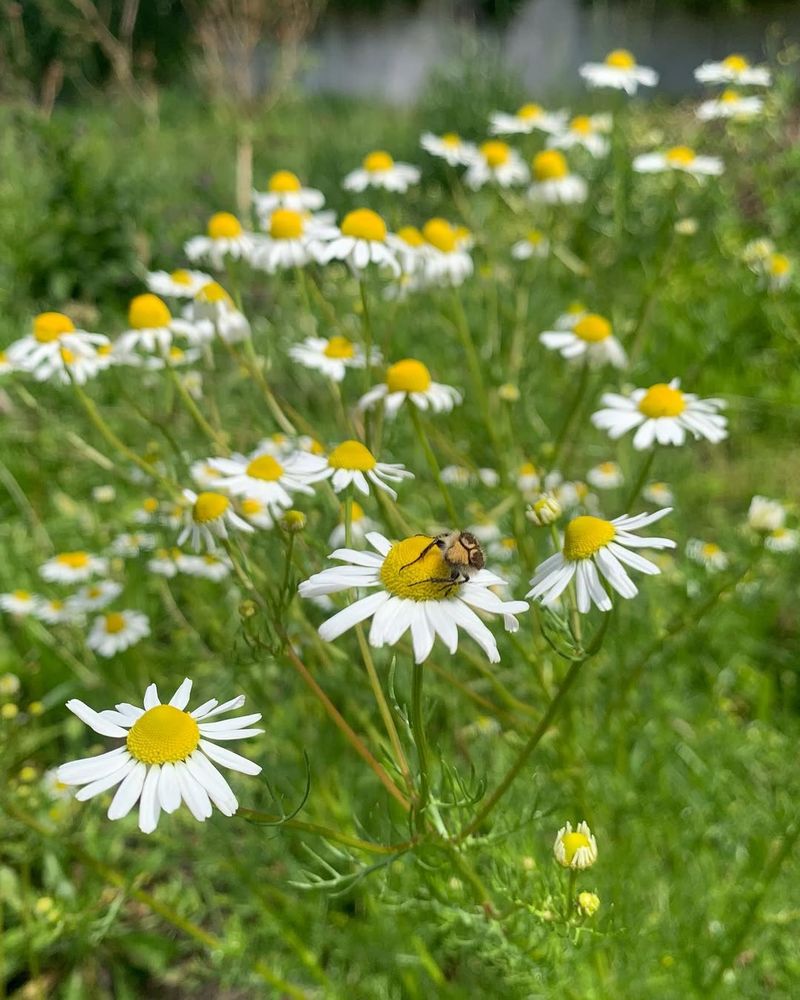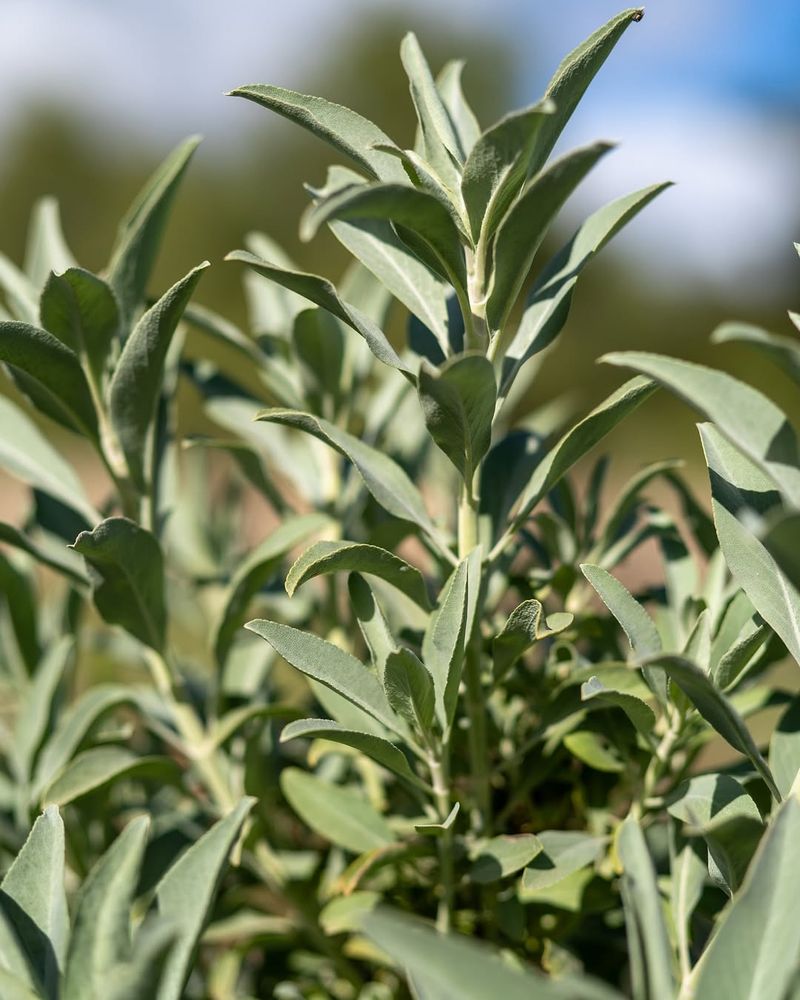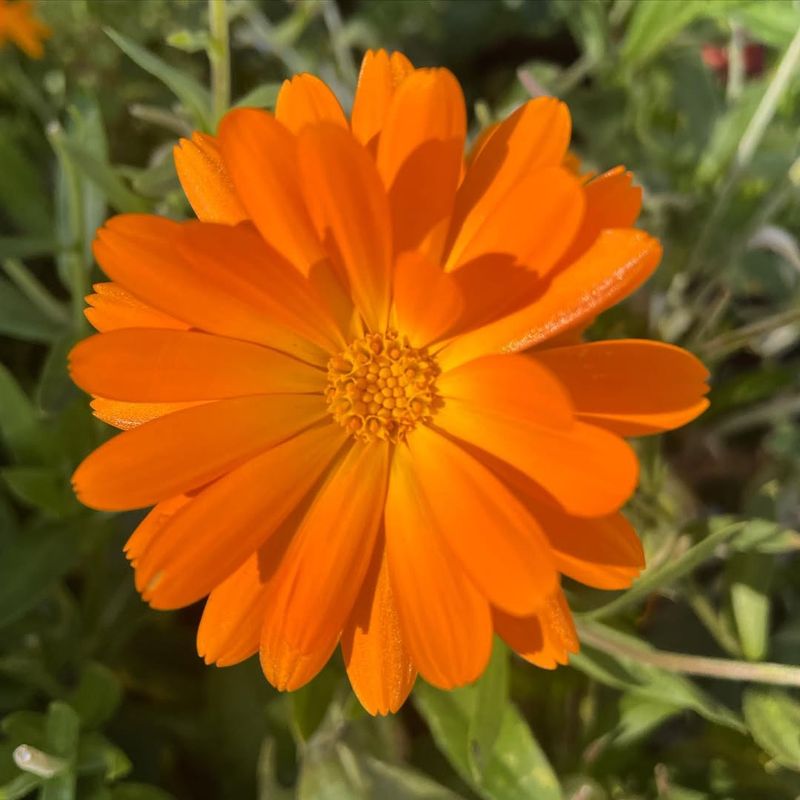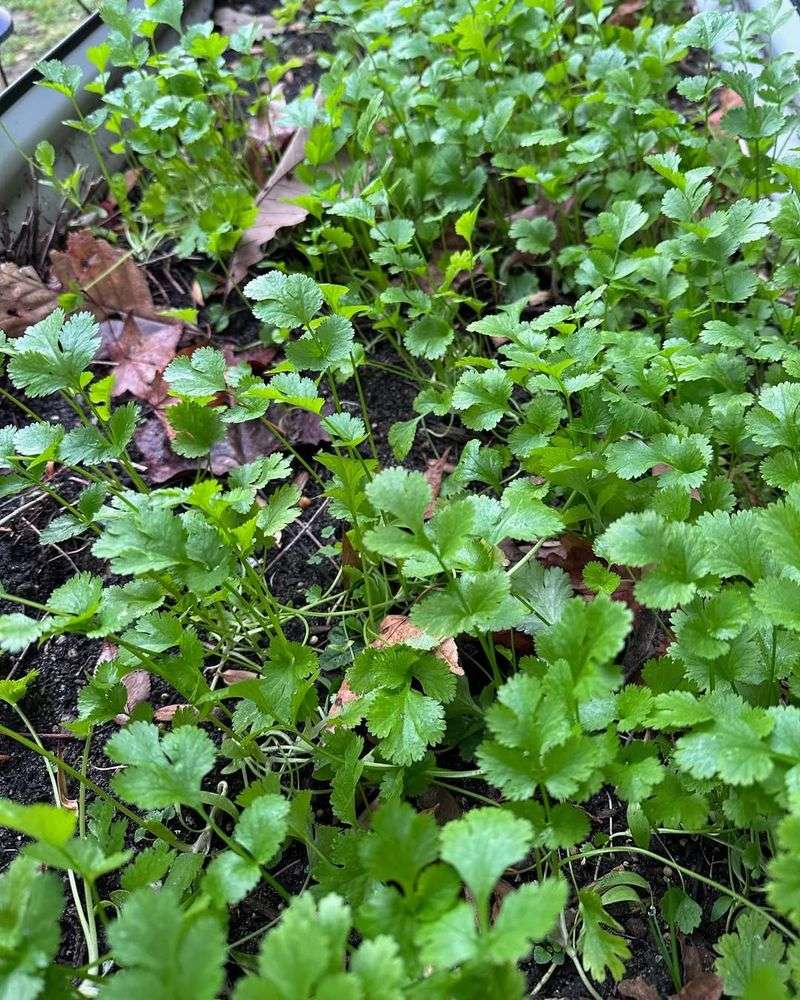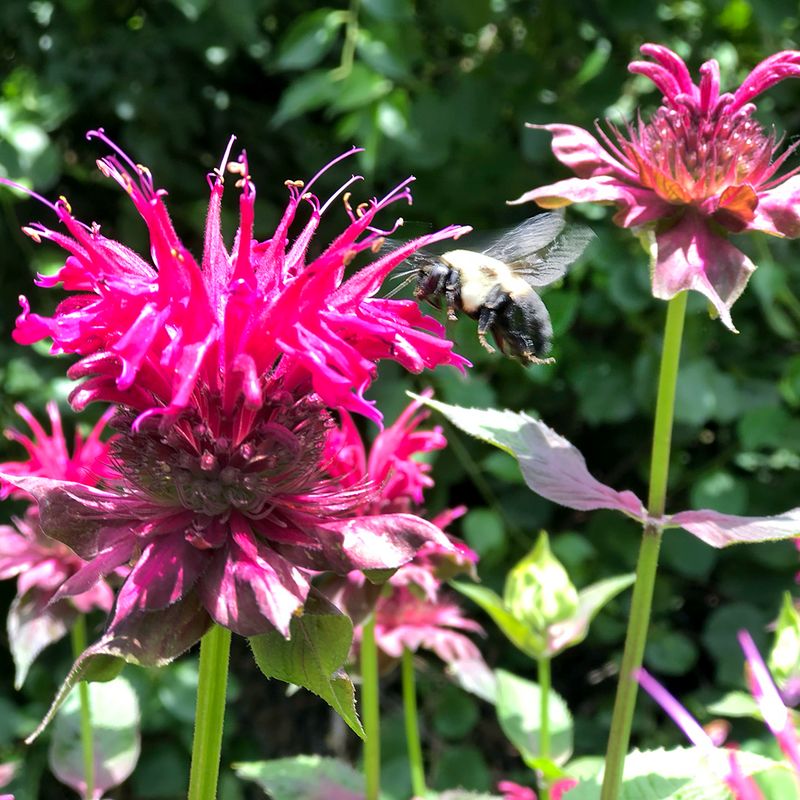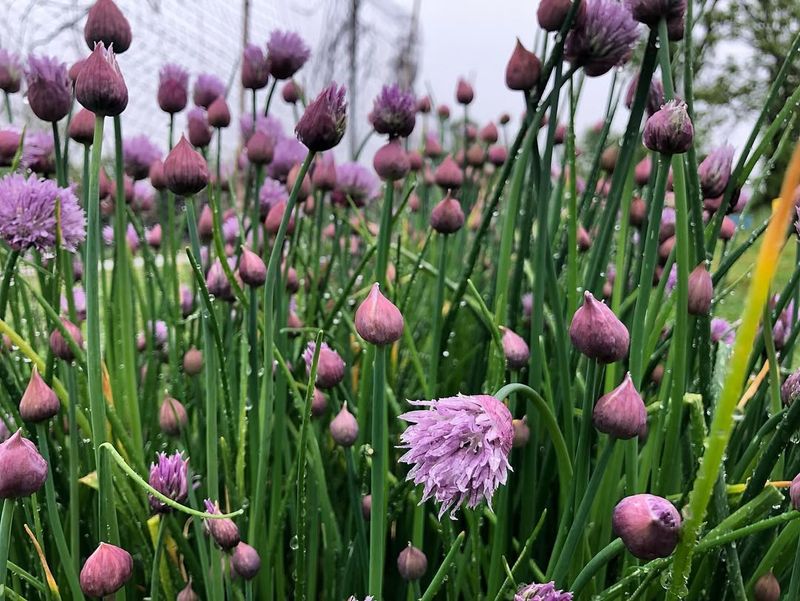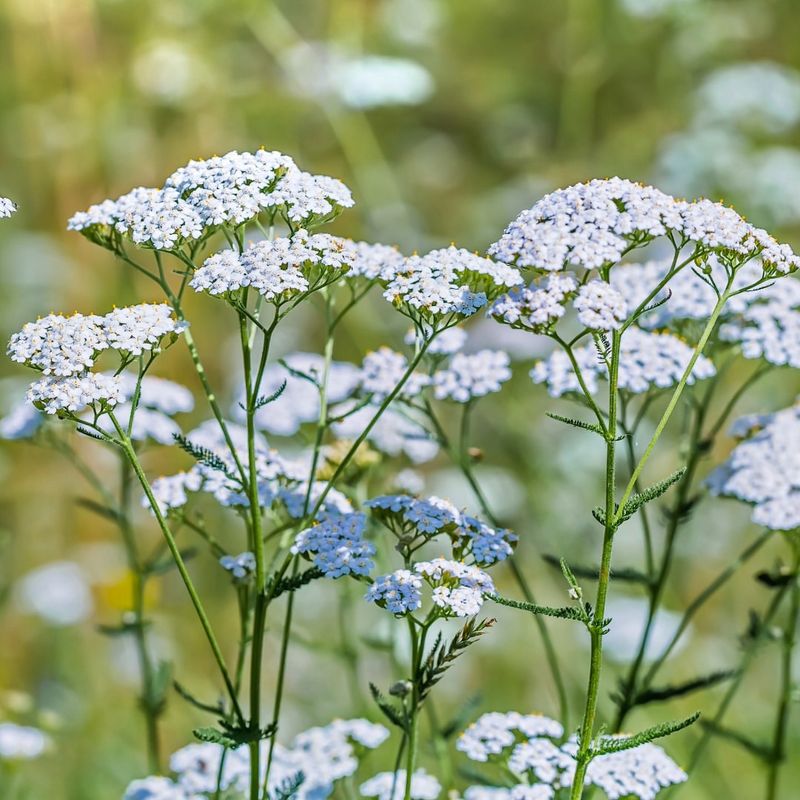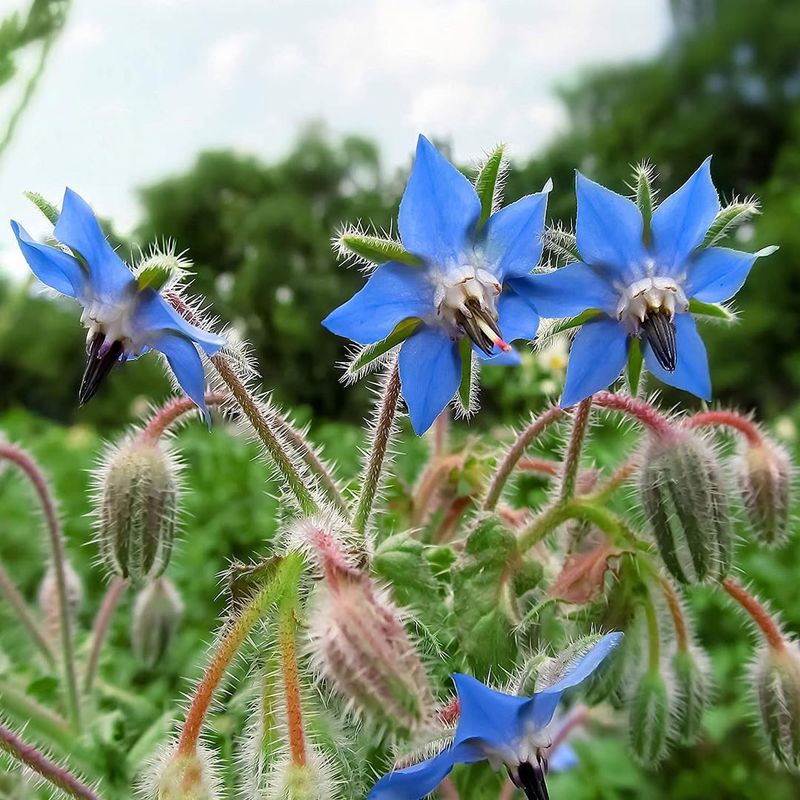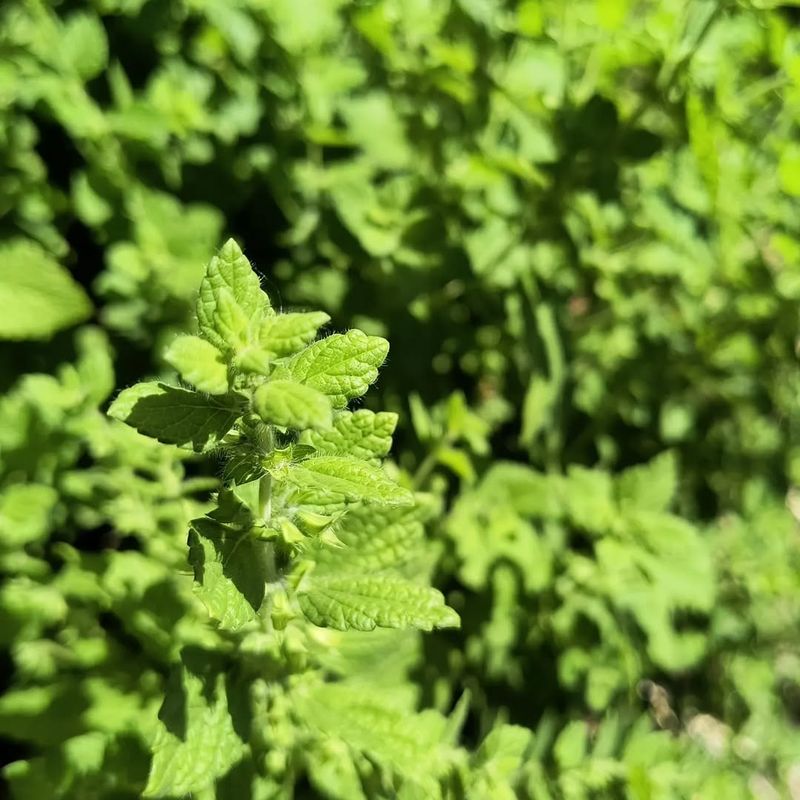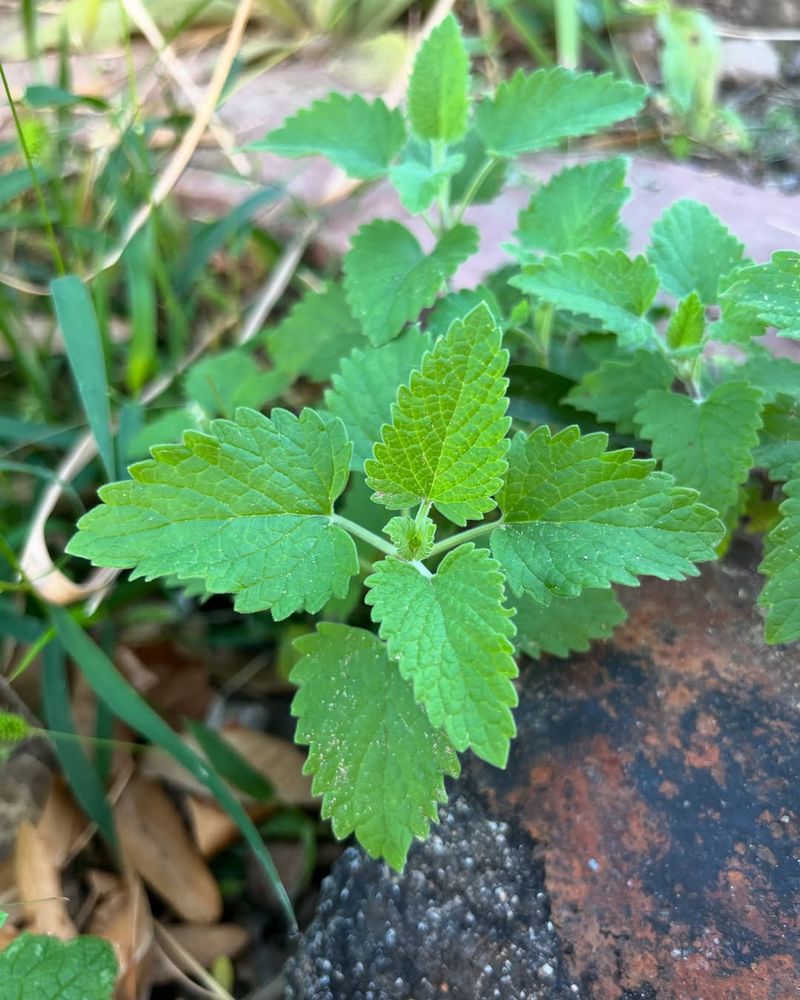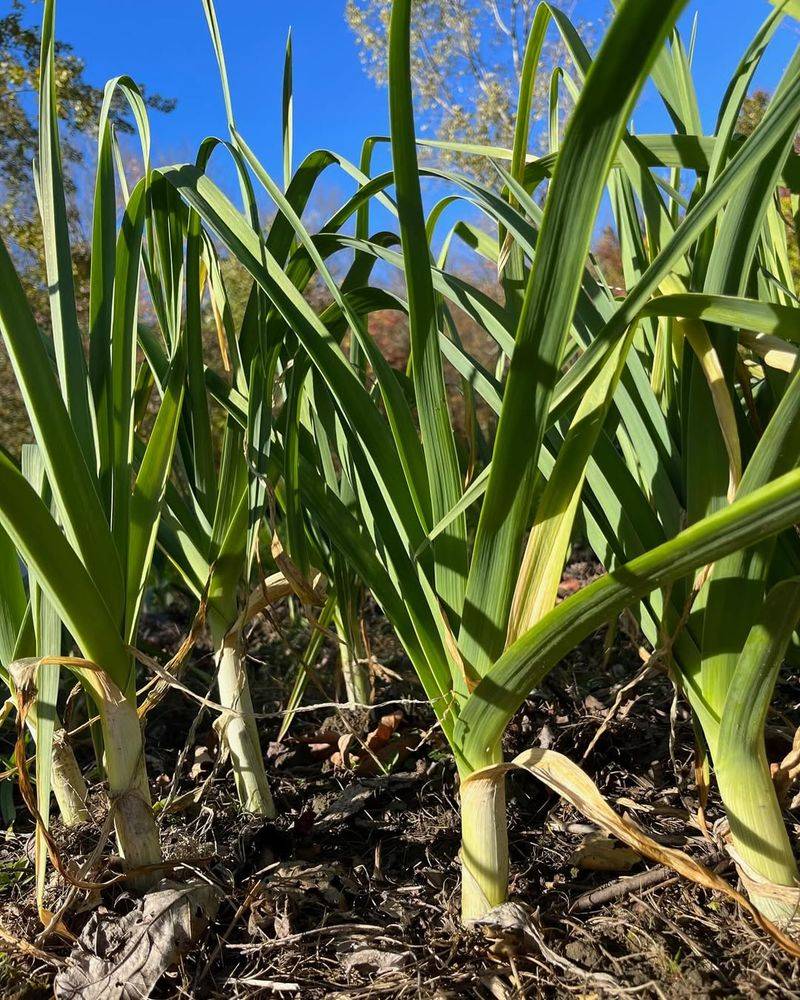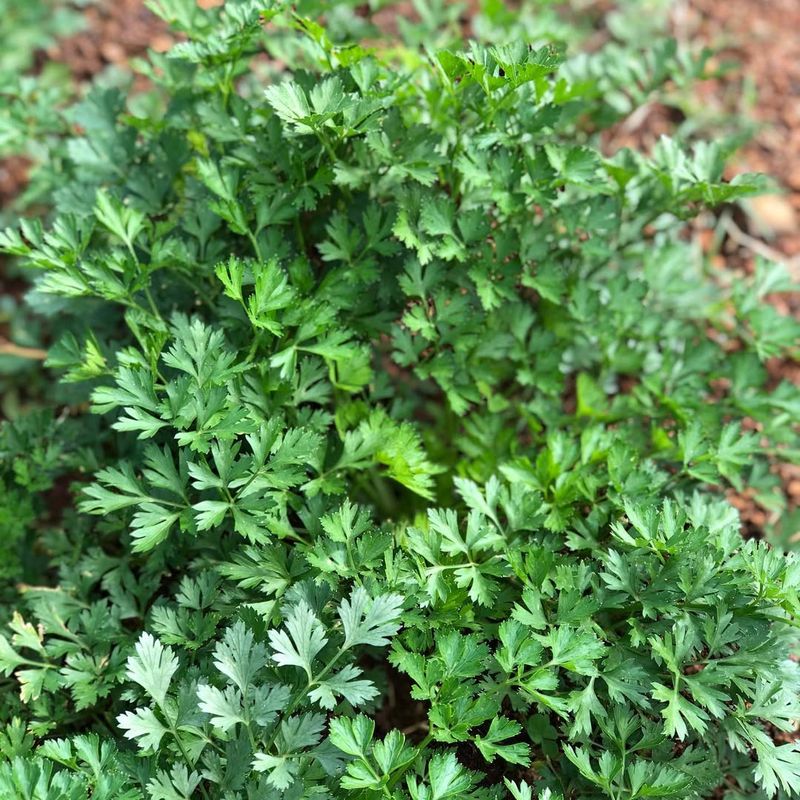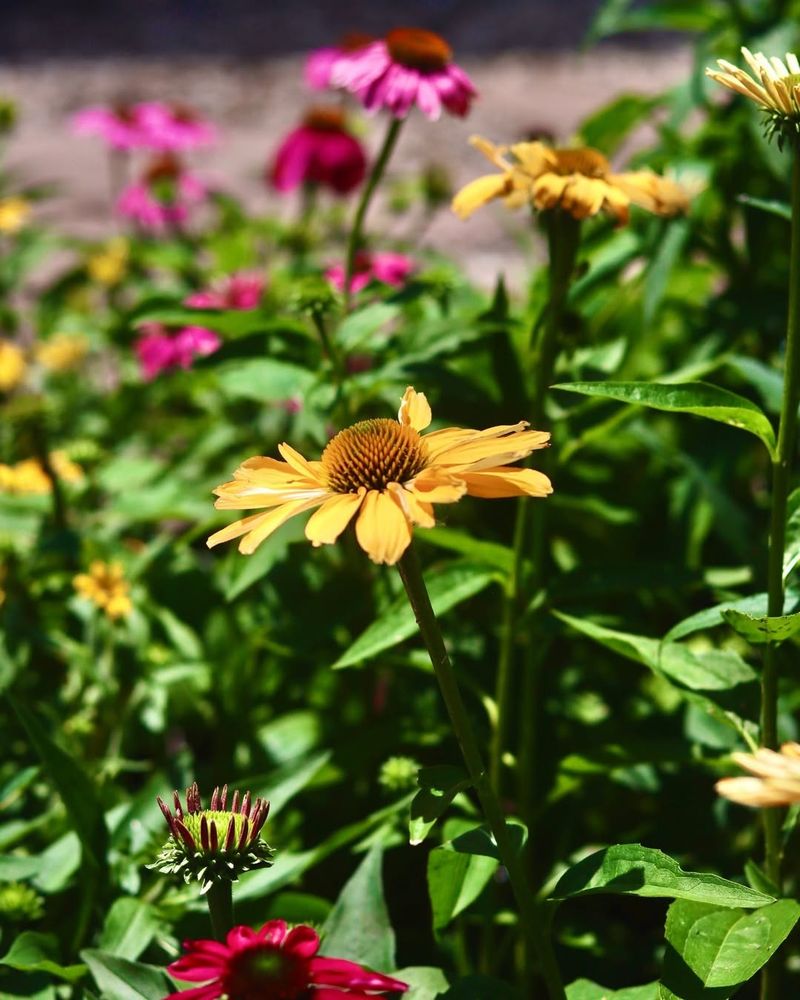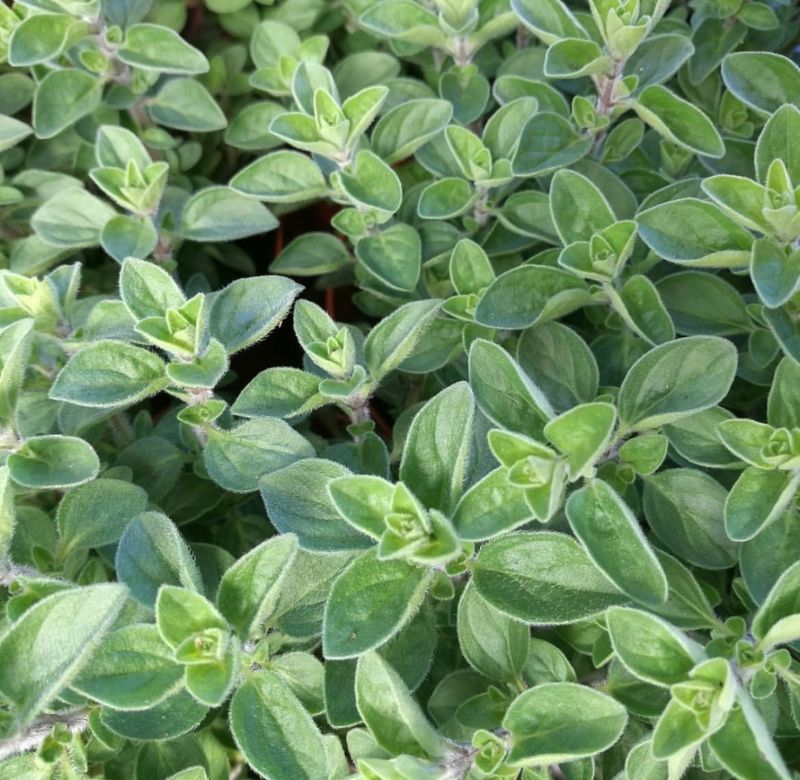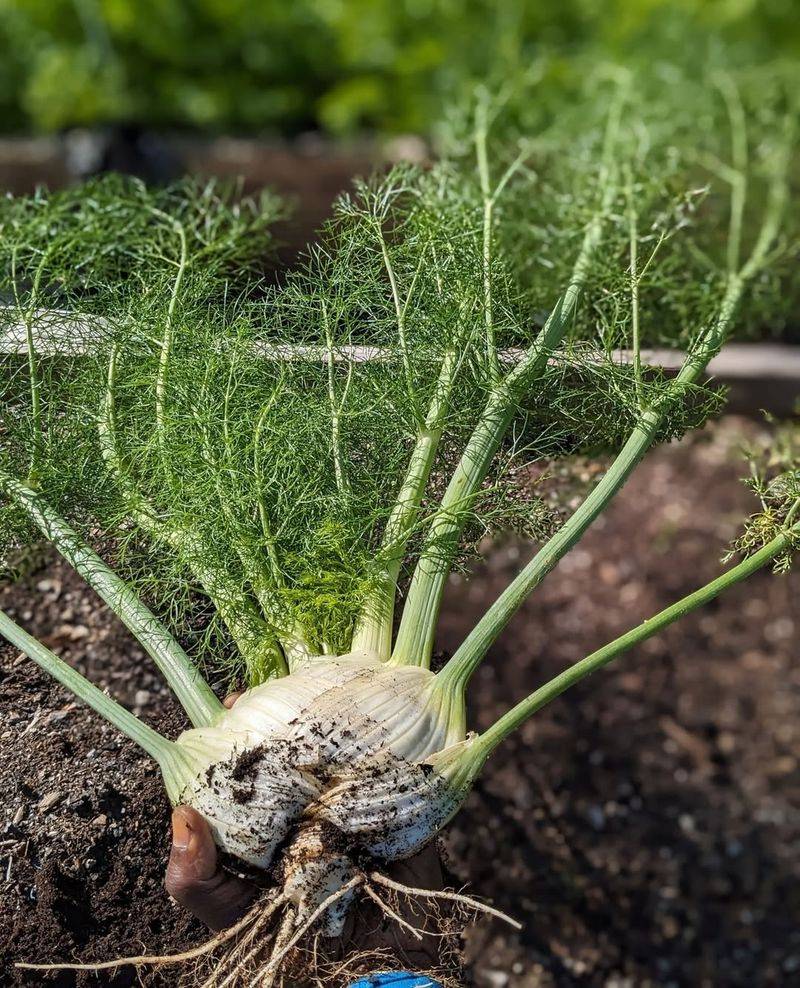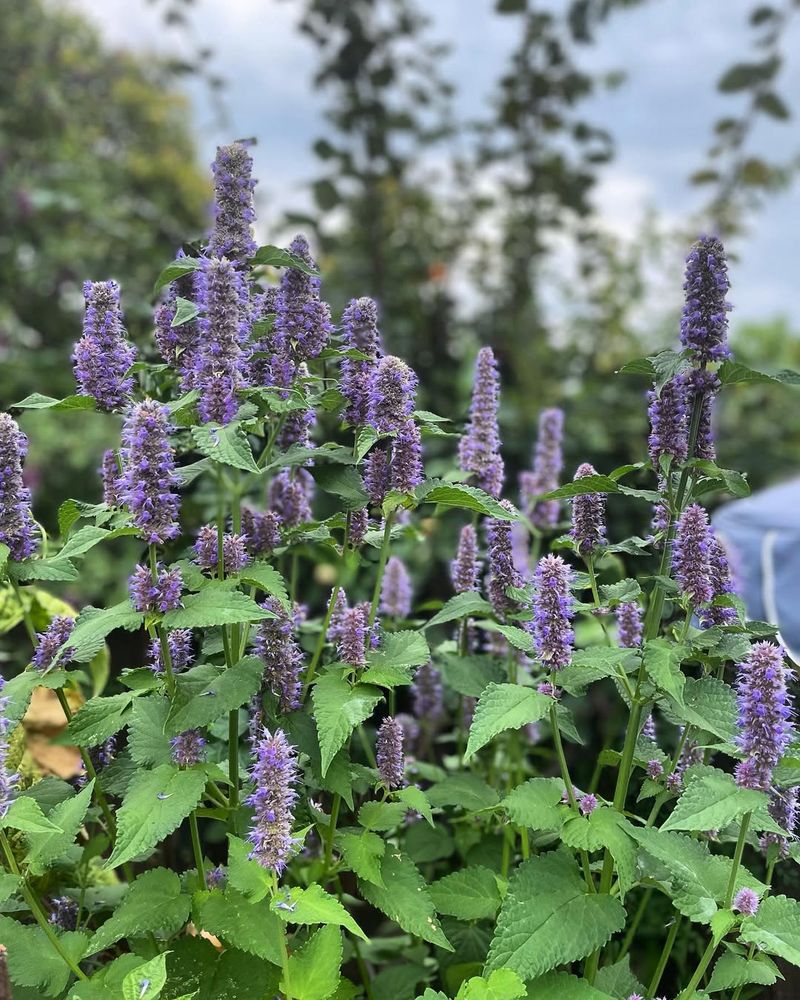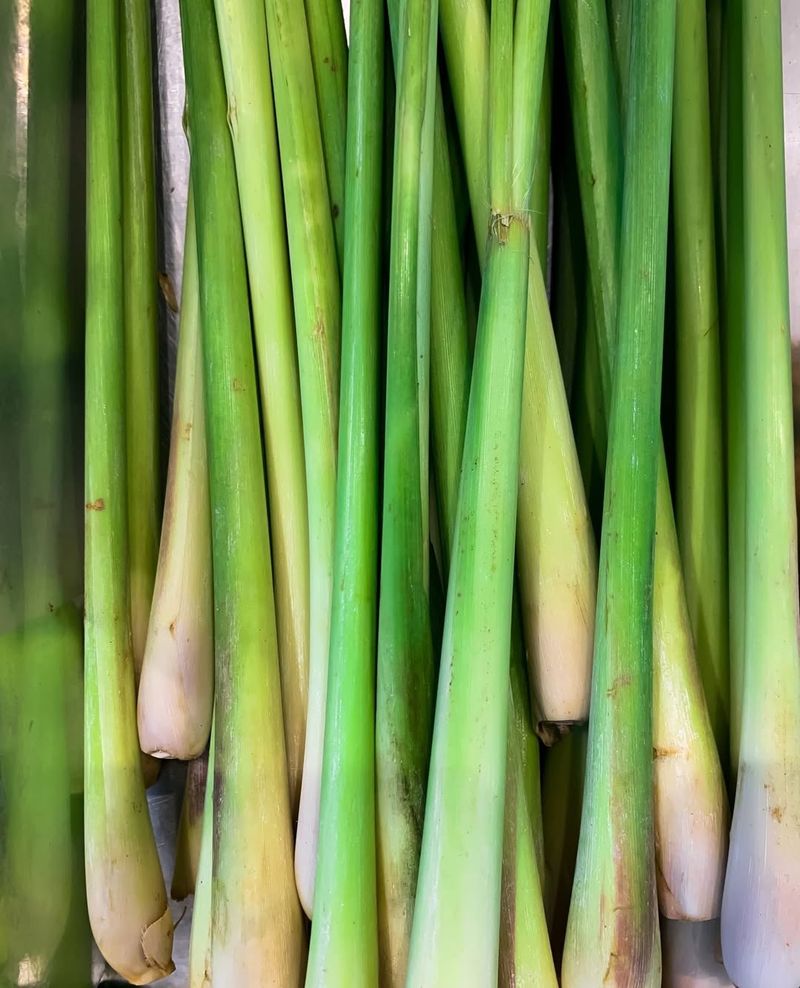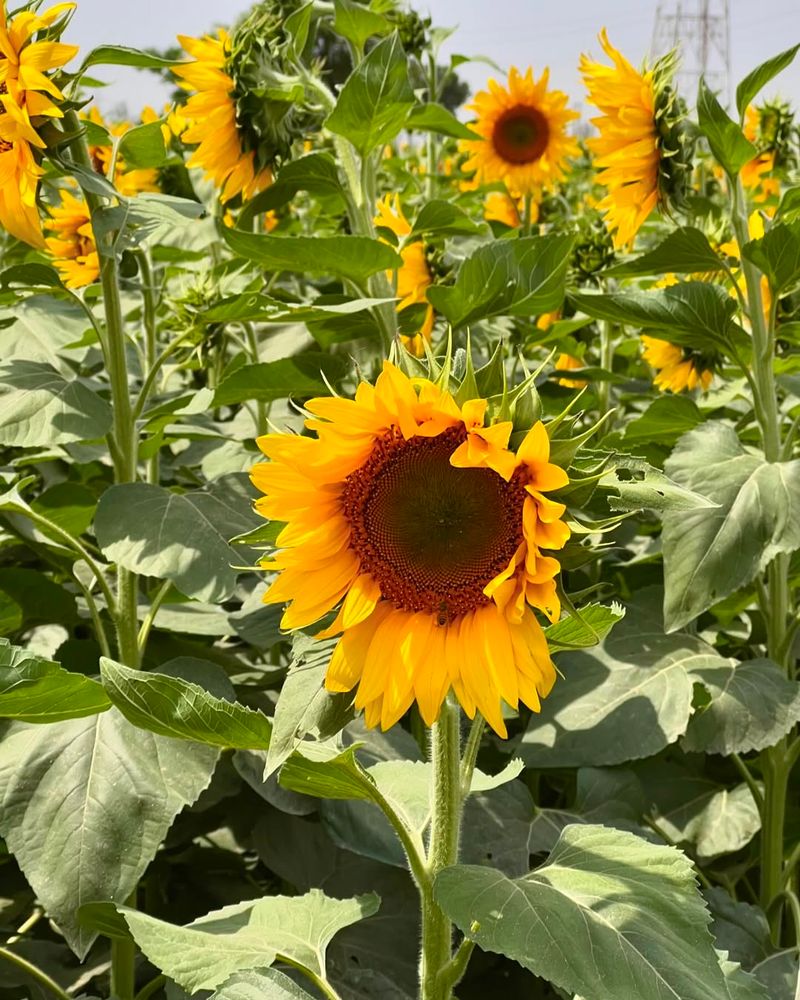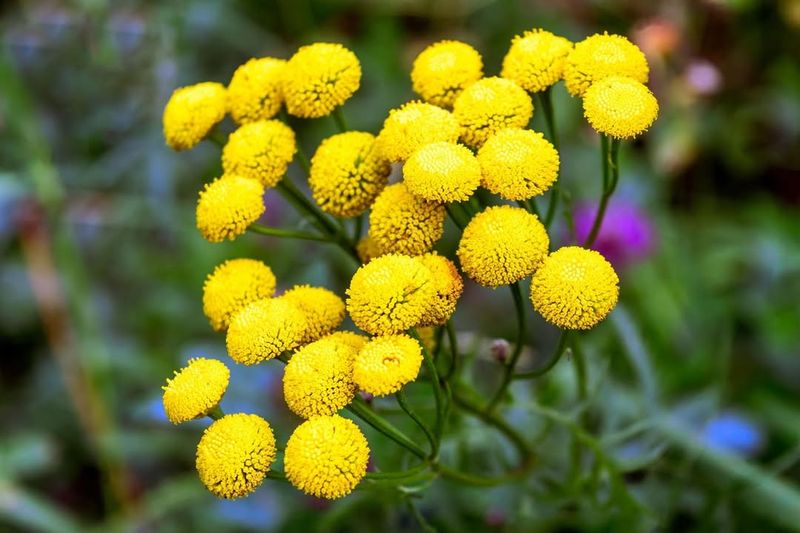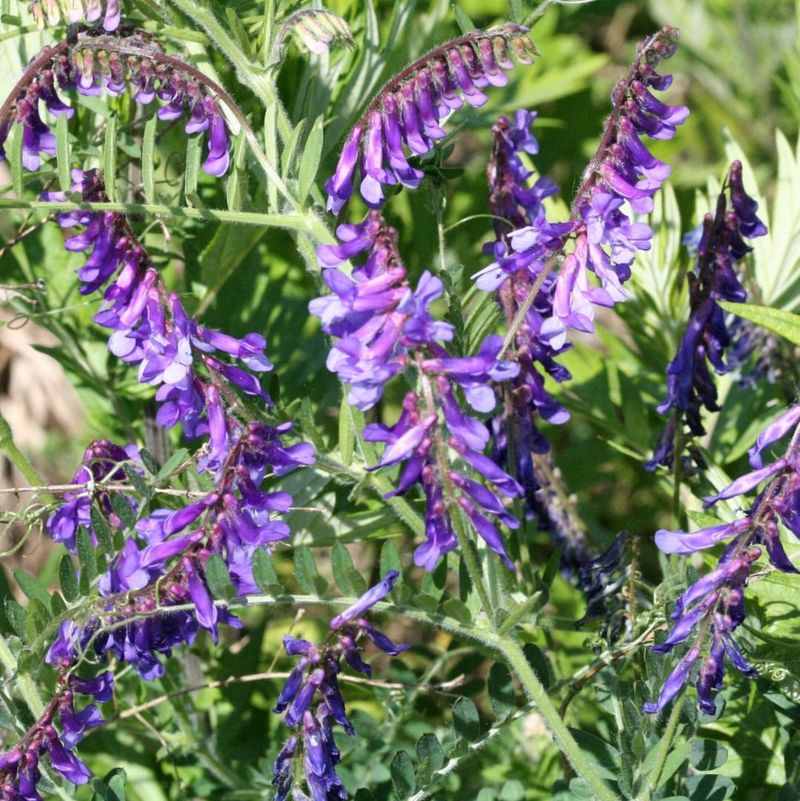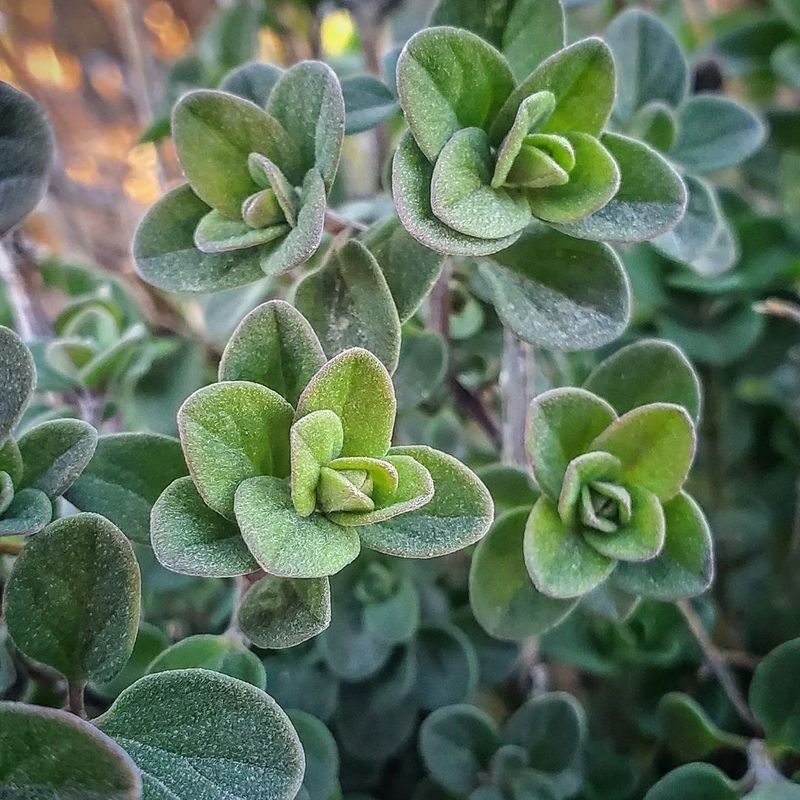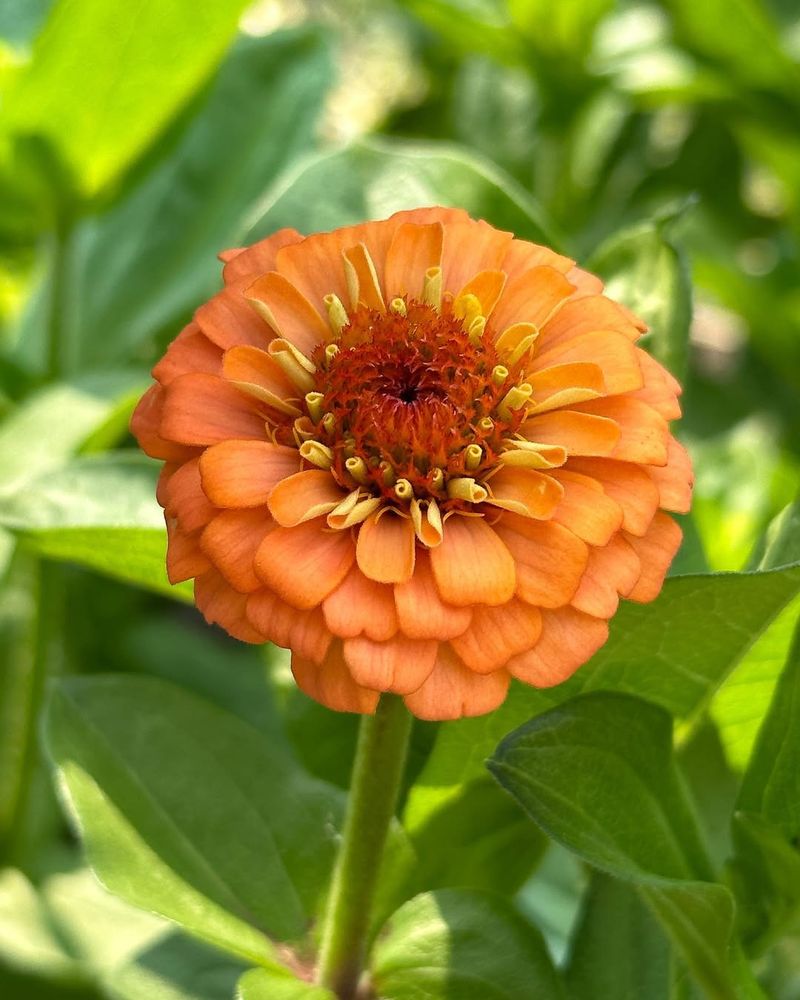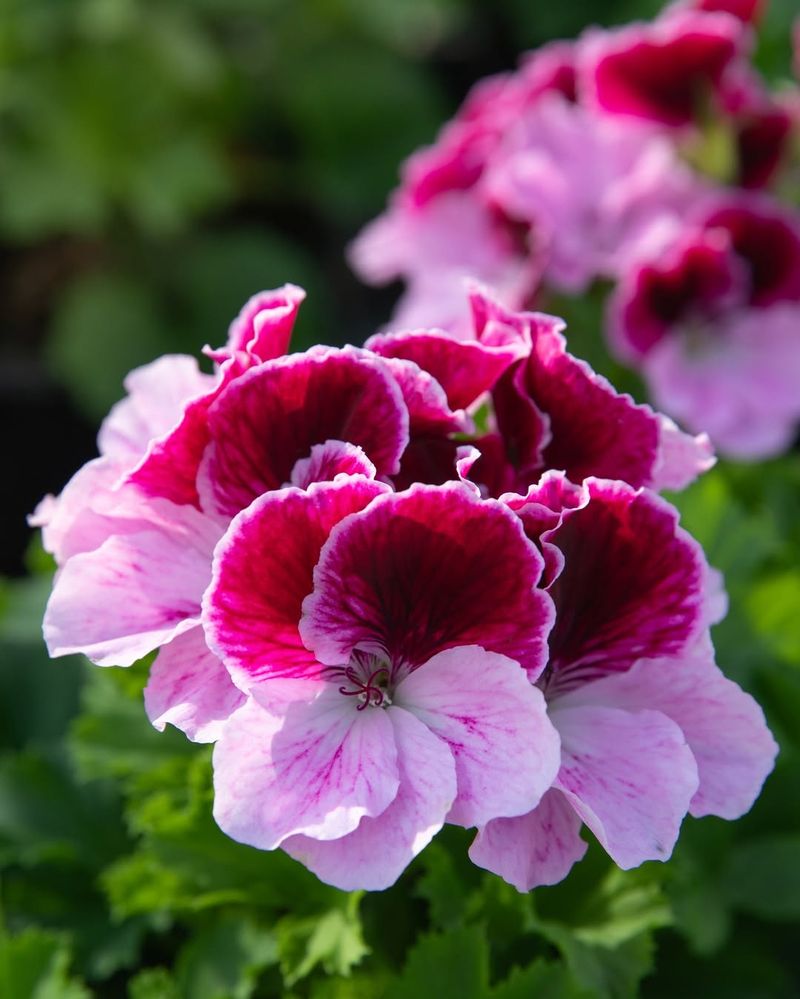Gardening has always been my escape, a way to reconnect with the earth and witness nature’s artistry. One of my favorite things is growing citrus trees, but it doesn’t stop there. Surrounding them with the right herbs and flowers can transform an ordinary garden into a vibrant, fragrant paradise.
Here’s a delightful collection of 32 companions to plant alongside those sunny trees. Each plant brings something unique to the table, enhancing the soil, deterring pests, or simply adding beauty and fragrance.
1. Lavender
Purple hues and soothing fragrances make gardens feel magical. Lavender is a perfect match for citrus trees, offering not only its calming scent but also attracting beneficial pollinators. Known for its ability to deter pests, it acts as a natural shield for your citrus grove.
Its presence can also enhance the soil’s nutrient profile, promoting better fruit yield. Whether you plant English, French, or Spanish varieties, lavender’s drought tolerance makes it an excellent companion. Give your citrus trees that extra edge by surrounding them with this aromatic beauty, creating a serene and productive garden space.
2. Basil
Spicy aroma and vibrant green leaves create a sensory delight. Basil is fantastic for pairing with citrus trees, known to repel insects that might harm your fruits. This herb thrives in the sun, enjoying the same conditions your citrus trees love.
Its ability to improve the soil’s health and attract pollinators makes it a valuable garden ally. Try different varieties like sweet, Thai, or lemon basil to add unique flavors to your culinary creations. Growing basil among your citrus trees is a smart and tasty choice, enhancing both the garden’s beauty and productivity.
3. Marigold
Vibrant hues and hardy blooms make any garden pop with color. Marigolds are a gardener’s favorite for good reason; they repel a variety of garden pests, protecting your citrus trees from harm. Known for their resilience, they thrive in the same sunny conditions as citrus.
These flowers also promote a healthy ecosystem, attracting beneficial insects that aid in pollination. Planting marigolds around your citrus trees not only brightens the garden but also creates a natural defense system. Their cheerful presence is sure to bring joy to anyone wandering through your garden.
4. Thyme
The subtlety in the garden can often be overlooked, but not when it comes to thyme. This herb is a low-growing marvel that thrives in sunlit areas, making it an ideal companion for citrus trees. Thyme’s aromatic leaves release oils that deter harmful insects.
Besides its pest-repelling properties, thyme improves soil structure, fostering better nutrient uptake for your trees. With varieties like lemon, creeping, or common thyme, you can enjoy a range of flavors and scents. Incorporating thyme into your citrus garden brings both utility and beauty, enhancing the overall garden experience.
5. Nasturtium
Splash of color and edible beauty catch the eye in any garden. Nasturtiums are not only visually appealing but also serve as a trap crop, attracting pests away from your citrus trees. Their peppery-flavored flowers and leaves are edible, adding zest to salads.
Known for their ability to thrive in poor soils, they don’t compete with citrus trees for nutrients. Their sprawling growth habit provides excellent ground cover, reducing weed growth. Adding nasturtiums to your garden means more than beauty; it’s a clever strategy for maintaining a healthy citrus-centric ecosystem.
6. Mint
Refreshing aromas and robust growth characterize this herb’s presence. Mint is an excellent choice for planting near citrus trees, providing a natural deterrent against pests. While it enjoys similar growing conditions, it’s wise to contain mint’s spread in garden beds or pots.
This herb’s vigorous growth can help suppress weeds, while its essential oils keep harmful insects at bay. Harvesting mint leaves for teas or garnishes is an added bonus. By incorporating mint around your citrus trees, you enrich the garden’s sensory appeal while creating a protective green oasis.
7. Dill
Airy texture and aromatic presence make dill a delightful addition to any garden. As a companion to citrus trees, dill attracts beneficial insects like ladybugs and parasitic wasps. These allies help control pest populations naturally.
Dill’s tall, feathery structure doesn’t overshadow citrus trees, making it an ideal garden mate. Regular harvesting encourages lush growth, and its culinary uses are endless, enhancing dishes with its unique flavor. Planting dill around your citrus trees ensures a balanced ecosystem, where beauty and functionality meet harmoniously.
8. Rosemary
Woody stems and pine-like fragrance fill the air with herbal notes. Rosemary is a fantastic companion for citrus trees, sharing a love for sunny, well-drained environments. Its aromatic oils deter pests, creating a protective barrier around your fruit trees.
This evergreen herb’s robust nature adds a structural element to the garden, and its culinary benefits are well-known. Easy to grow and maintain, rosemary requires minimal care, making it a gardener’s ally. Incorporating rosemary with your citrus trees enhances the landscape while ensuring a bountiful harvest.
9. Chamomile
Gentle blooms and calming qualities define this herb’s presence in the garden. Chamomile pairs beautifully with citrus trees, attracting beneficial insects and improving soil health. Known for its soothing properties, it also aids in the recovery of stressed plants.
Planting chamomile around citrus trees can enhance their vitality and boost resilience against diseases. Its small, daisy-like flowers add a touch of elegance to any garden space. By integrating chamomile into your garden, you embrace both aesthetics and practicality, fostering a more vibrant and healthy environment.
10. Sage
Dignified appearance and aromatic leaves provide more than just beauty. Sage is a reliable companion plant for citrus trees, deterring pests with its strong scent. Thriving in similar soil conditions, it doesn’t compete for nutrients and adds a sculptural element to the garden.
Sage’s usefulness extends beyond the garden with its culinary and medicinal applications. Its regular harvest promotes bushier growth, enhancing your citrus grove’s overall appeal. Incorporating sage into your planting scheme ensures a harmonious and productive garden environment.
11. Calendula
Golden blooms and medicinal properties make calendula a prized garden addition. As a companion plant for citrus trees, it attracts pollinators and repels unwanted pests. Known for its healing properties, calendula also enriches the garden ecosystem.
The vibrant flowers are edible, adding color and interest to salads and dishes. Easy to grow, calendula thrives in the same conditions as citrus trees, making it an ideal partner. By planting calendula around your citrus trees, you enhance both the garden’s beauty and its ecological balance.
12. Cilantro
Bold flavors and feathery foliage add a culinary twist to any garden. Cilantro is a wonderful companion for citrus trees, attracting beneficial insects and providing culinary delights. Known for its quick growth, it thrives in sunny spots alongside citrus trees.
Regularly harvesting cilantro encourages more lush growth, and its seeds, known as coriander, add a different flavor dimension. This versatile herb complements the citrus environment, making it both a practical and tasty addition. Including cilantro in your planting scheme ensures a vibrant and multi-functional garden.
13. Bee Balm
Vibrant hues and a bustling pollinator presence make bee balm a garden star. As a companion to citrus trees, it draws in bees and butterflies, crucial for pollination and overall garden health. Its striking flowers and minty fragrance delight the senses.
Bee balm thrives in sunny, well-drained environments, sharing the same preferences as citrus trees. Its presence not only enhances the garden’s aesthetic but also fosters a thriving ecosystem. By planting bee balm around your citrus trees, you create a lively and productive garden space, full of color and life.
14. Chives
Subtle onion-like flavor and delicate flowers characterize chives. They make a perfect companion plant for citrus trees, naturally repelling pests with their strong scent. Chives thrive in similar conditions, enjoying the sunshine alongside citrus trees.
Their purple blossoms add a splash of color, while the leaves offer culinary versatility. Regular harvest encourages growth, providing a continuous supply of fresh chives for your kitchen. Adding chives around your citrus trees enriches the garden, combining functionality with beauty in a harmonious setting.
15. Yarrow
Ancient roots and modern benefits characterize yarrow’s presence in the garden. As a companion to citrus trees, it attracts beneficial insects and improves soil quality. Known for its medicinal properties, yarrow’s feathery foliage adds texture to the garden.
It thrives in dry, sunny conditions, complementing citrus tree requirements. Yarrow’s ability to aid in water retention and prevent soil erosion makes it an ideal garden ally. By incorporating yarrow into your citrus garden, you promote a balanced ecosystem and enhance the overall garden’s resilience.
16. Borage
Star-shaped flowers and cool undertones define borage’s appeal. As a companion to citrus trees, borage attracts pollinators while deterring harmful insects with its prickly leaves. Known for enhancing plant resilience, it supports healthy growth in citrus trees.
Borage is easy to grow, thriving in sunny spots with well-drained soil. Its edible flowers add a cucumber-like taste to salads and drinks. By planting borage near your citrus trees, you cultivate a garden that’s as productive as it is beautiful, fostering a thriving natural environment.
17. Lemon Balm
Citrusy aroma and lush green leaves make lemon balm a charming garden addition. This herb is an excellent companion for citrus trees, naturally deterring pests and attracting beneficial insects. Known for its calming properties, it adds more than just beauty.
Lemon balm thrives in sunny, well-drained areas, perfectly complementing citrus trees. Regular harvesting of leaves encourages bushier growth, providing a fresh supply for teas and remedies. Adding lemon balm to your garden enhances its sensory appeal, creating a serene and productive space filled with fragrance and life.
18. Catnip
Feline favorites and insect deterrents define catnip’s role in the garden. As a companion to citrus trees, catnip’s aromatic leaves repel pests effectively. Thriving under the same sunny conditions, it complements citrus trees without competing for nutrients.
Besides its pest-repelling properties, catnip is easy to maintain, making it a low-effort addition. It’s also known to attract beneficial insects, supporting a balanced garden ecosystem. By planting catnip around your citrus trees, you create a garden that’s both protective and harmonious, offering more than just visual appeal.
19. Garlic
Pungent aroma and protective properties make garlic a garden essential. As a companion to citrus trees, garlic repels a wide range of pests, creating a natural barrier. Known for its antifungal properties, garlic supports overall plant health.
It thrives in sunny spots, enjoying the same environment as citrus trees. Regular harvesting of garlic bulbs provides both culinary and health benefits. By incorporating garlic into your citrus garden, you enhance pest control naturally, fostering a healthier and more productive growing environment.
20. Parsley
Rich green foliage and versatility define parsley’s charm in the garden. As a companion to citrus trees, parsley attracts beneficial insects, enhancing pollination. Known for its culinary uses, it thrives in similar growing conditions as citrus trees.
Regular harvesting encourages fresh growth, providing a constant supply for cooking. Parsley’s ability to improve soil quality makes it a valuable garden ally. By planting parsley around your citrus trees, you create a garden that’s both functional and flavorful, offering a harmonious blend of beauty and utility.
21. Echinacea
Cone-shaped flowers and vibrant colors make echinacea a garden favorite. As a companion to citrus trees, it attracts pollinators and supports a healthy ecosystem. Known for its medicinal properties, echinacea adds both beauty and function.
It thrives in sunny, well-drained conditions, complementing the citrus tree environment. Echinacea’s robust nature ensures it doesn’t compete for resources, blending seamlessly into your garden. By incorporating echinacea around your citrus trees, you promote biodiversity and create a visually stunning backdrop, enhancing the garden’s overall appeal.
22. Oregano
Aromatic leaves and robust growth make oregano a garden staple. As a companion to citrus trees, oregano deters pests with its strong scent. Known for its culinary applications, it thrives in the same sunny conditions as citrus trees.
Regular pruning encourages bushy growth, providing a constant supply for cooking. Oregano’s resilience and low maintenance make it an ideal partner, enriching the garden environment. By planting oregano around your citrus trees, you enhance both the garden’s productivity and its aromatic profile, creating a flavorful and functional space.
23. Fennel
Sweet aroma and feathery presence define fennel’s role in the garden. As a companion to citrus trees, fennel attracts beneficial insects and supports healthy pollination. Known for its distinctive flavor, it thrives in similar sunny conditions.
Fennel’s deep root system doesn’t compete with citrus trees, making it a harmonious partner. Regular harvesting of fronds and seeds offers both culinary and health benefits. By integrating fennel around your citrus trees, you enhance the garden’s biodiversity and create a thriving ecosystem, rich in both form and function.
24. Hyssop
Floral spikes and aromatic presence define hyssop’s garden appeal. As a companion to citrus trees, hyssop attracts beneficial insects and deters pests. Known for its medicinal uses, it thrives in sunny, well-drained areas.
Hyssop’s resilience and vibrant blooms add both beauty and protection to your garden. Regular pruning enhances its growth, ensuring a lush appearance. By planting hyssop around your citrus trees, you create a garden that’s both visually stunning and ecologically balanced, offering a perfect blend of utility and charm.
25. Lemongrass
Tall blades and a refreshing scent make lemongrass an intriguing garden addition. As a companion plant for citrus trees, lemongrass repels pests and supports a healthy ecosystem. Known for its culinary uses, it thrives in similar sunny conditions.
Lemongrass’s robust growth and minimal maintenance make it an excellent partner. Regular harvesting provides fresh stalks for cooking and remedies. By growing lemongrass around your citrus trees, you enhance the garden’s sensory and functional appeal, creating a lush and aromatic environment that’s both productive and protective.
26. Sunflower
Golden faces and towering heights define sunflower’s garden presence. As a companion to citrus trees, sunflowers attract pollinators and provide natural support for climbing plants. Known for their cheery appearance, they thrive in sunny conditions.
Sunflower’s deep roots help break up soil, improving overall soil health. They also provide shade and protection for young citrus trees. By incorporating sunflowers around your citrus trees, you create a lively and flourishing garden space, where beauty and functionality coexist, offering a delightful garden experience.
27. Tansy
Yellow blooms and pest-repelling properties define tansy’s garden role. As a companion to citrus trees, tansy deters a wide range of insects naturally. Known for its resilience, it thrives in sunny, well-drained environments.
Tansy’s ability to enhance soil health makes it a valuable garden ally. Regular pruning promotes lush growth, adding structure and beauty to your garden. By planting tansy around your citrus trees, you create a protective and attractive garden space, where function meets aesthetics, enhancing the overall garden experience.
28. Vetch
Purple blooms and nitrogen-fixing abilities make vetch a garden asset. As a companion to citrus trees, vetch enriches the soil with nitrogen, supporting robust growth. Known for its sprawling habit, it provides excellent ground cover.
Vetch’s ability to suppress weeds and improve soil structure makes it an ideal partner for citrus trees. Its presence promotes a healthy and balanced garden ecosystem. By incorporating vetch around your citrus trees, you enhance the garden’s fertility and beauty, creating a thriving and sustainable environment.
29. Marjoram
Sweet aroma and lush growth characterize marjoram’s garden appeal. As a companion to citrus trees, marjoram deters pests and enhances soil health. Known for its culinary uses, it thrives in similar sunny conditions.
Marjoram’s resilience and low maintenance make it a perfect garden partner. Regular harvesting promotes bushy growth, providing a fresh supply for cooking. By planting marjoram around your citrus trees, you create a garden that’s both aromatic and functional, offering a harmonious blend of form and utility.
30. Snapdragon
Colorful blooms and whimsical shapes define snapdragon’s charm. As a companion to citrus trees, snapdragons attract pollinators and add visual interest. Known for their unique flower forms, they thrive in sunny spots.
Snapdragon’s ability to deter some pests makes it a versatile garden addition. Regular deadheading encourages prolonged blooming, ensuring continuous color. By planting snapdragons around your citrus trees, you enhance the garden’s vibrancy, creating a lively and enchanting environment.
31. Zinnia
Bold colors and daisy-like shapes make zinnias a garden favorite. As a companion to citrus trees, zinnias attract pollinators and resist pests. Known for their long-lasting blooms, they thrive in sunny, well-drained areas.
Zinnia’s ability to brighten any garden space with minimal effort makes them ideal partners for citrus trees. By regularly deadheading, you can enjoy continuous blooms throughout the growing season. Planting zinnias around your citrus trees creates a garden that’s as colorful as it is functional, enhancing the overall aesthetic.
32. Geranium
Vibrant blooms and pleasant scents define geranium’s garden appeal. As a companion to citrus trees, geraniums deter pests with their aromatic leaves. Known for their hardy nature, they thrive in similar sunny conditions.
Geranium’s ability to enhance garden aesthetics with minimal maintenance makes them a practical choice. Their continuous bloom cycle adds consistent color and interest. By planting geraniums around your citrus trees, you create a garden that’s both protective and beautiful, offering a charming and effective solution for garden enhancement.

